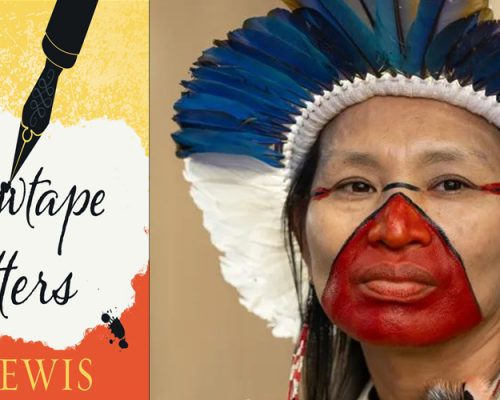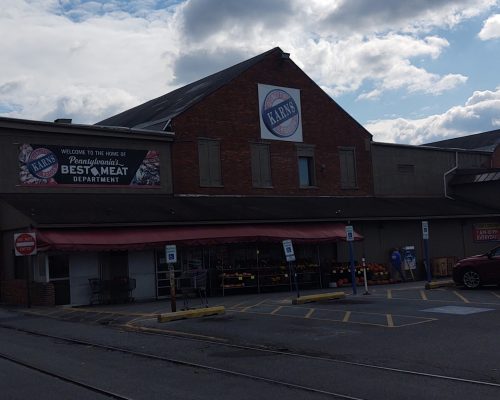As I was thinking on this piece today there were several different scripture texts that popped into my mind and I almost wanted to start with one of them, but when I read the surrounding context I’m not sure it is well-suited to the main theme of this piece.
On the other hand, perhaps it is a perfectly-suited opener. My fear is that readers may become diverted with all the controversial mess-and-mucky interpretations/applications/conversations that have likely been surrounding this chapter of I Peter since it was first penned.
I’m just going to go for it with the phrase that came to mind from memory (it seems to be some meld of translations) and then link the bigger context for anyone wishing to delve into that, for any reason.
“And you are her children if you do what is right and don’t shrink back in fear”
I Peter 3
Other biblical references that zoomed through my mind had to do with older women teaching younger women how to be women of Christian strength, character and purpose; the woman mentioned somewhere in the NT that was a maker/trader of purple (Lydia, a “seller of purple” in the book of Acts); and of course, The Virtuous Woman described in Proverbs 31.
I’ve recently been doing reading here-and-there from family genealogy books (some filled with fascinating family stories) and contemplating a number of things. One thing that interests me as I try to retroactively better understand the immediate family and, the ancestors, that helped form my mother, is the subject of spiritual beliefs, practices and character of both male and female ancestors.
In other words, matters in the realm of spiritual legacy.
Right now, I seem to be focusing more and learning more through the writings of various female figures, along with other descriptions of ancestors written of that were in the Carter family. My mother’s mother (my grandmother) had the maiden name of Carter and there is a wealth of spiritual history to be found in this family that I find intriguing.
I do believe in both the idea and very real nature of spiritual legacy–and blessing and cursing–that can be embedded generationally through a number of vehicles of inheritance, including environmental family culture.
Last weekend I read of my mother’s Aunt Emma with fascination. I felt some type of spiritual connection with her (if that can be possible through the indirect heritages of those in ancestor generations never known or met). I did also contemplate the various biblical lineages that we find mentioned throughout Old and New Testament, but especially those that were not direct blood-kin-connections but more of spiritual models and of the household of faith. These were listed in what some call the “hall of faith” passage in Hebrews 11.
With that introduction, I will first paste in a scan of the description of Emma, and then re-type it for easier reading. I am not sure who wrote this description (perhaps it was written by the author Judge Carter as a composite summary given by various other family members). My mother was named after her grandmother, Margaret Jane Kennedy. Emma was the daughter of Margaret Jane and the older sister of Mary Effie Carter (my grandmother), who bore my mother as her tenth child, and then, my mother bore me.
Around 1910, Margaret Jane went to live with her daughter Emma, in California. This was about seventeen years after her husband Jacob Albert Carter’s premature death through a tragic mishap, which I will feature in more depth in a future piece.
But for today, I too write of Emma, honoring and noticing that the description of her seems to closely follow much of the pattern of the woman described in Proverbs 31. Different details–but similar spirit, heart, purpose and deeds.




Emma Florence Carter (Woods) – my mother’s Aunt
married to Peter Elihu Woods on 5/2/1901
“Emma Florence Carter (Woods) was a matriarch, but an inspiration to her five children. She was a good cook and housekeeper, an organizer, and a strict disciplinarian. Her talents were many.
At a very young age she learned to spin and weave, both wool and linen. She surprised doctors with her knowledge of medicine, which she had learned from gathering roots and leaves when drug stores were not common. She had an instinctive ability to cure many ailments without calling a doctor. She was artistic, and could do almost anything with her hands.
When she was twenty, she worked in a large department stoere in Pittsburg, Pa., as a milliner. At that time a milliner made silk and velvet roses to trim a hat, or tied ostrich feathers to make the large plumes that decorated women’s hats at that period. She could take combings of hair and weave switches for the elaborate hair arrangements.
Education was so important to her that regardless of financial problems, she managed to see that each of her children received a college education. Most people remember her great love of her family and relatives, as well as her friends. Regardless of how busy she was, she had a kindness that reached out to not only her own, but to children in the neighborhood. It was to Mrs. Woods that the children came with their skinned knees and little hurts. She could wipe a tear and bandage a sore with great gentleness.”
(from The CARTER, ALKIRE, KENNEDY, WILLIAMS and Related Families, by Judge James M. Carter, published 1977)
__________
There is a calligraphy piece I created awhile back which can be personalized at the bottom in a number of ways. I thought it might be nice–for this blog piece–to insert Emma Florence. I suppose she would be my great aunt…
Thank You For Reading
Please Feel Free To Express Your Thoughts Below





